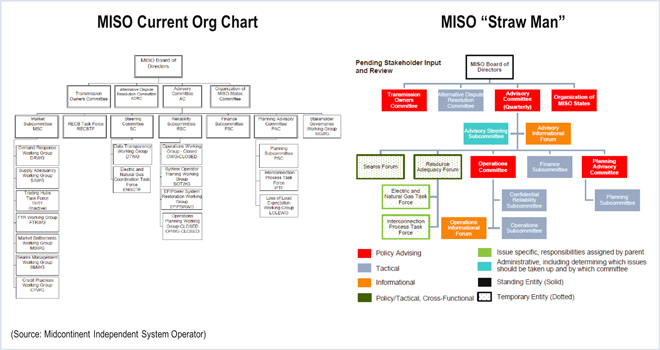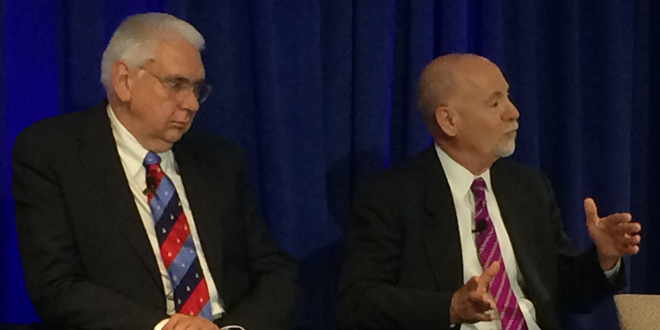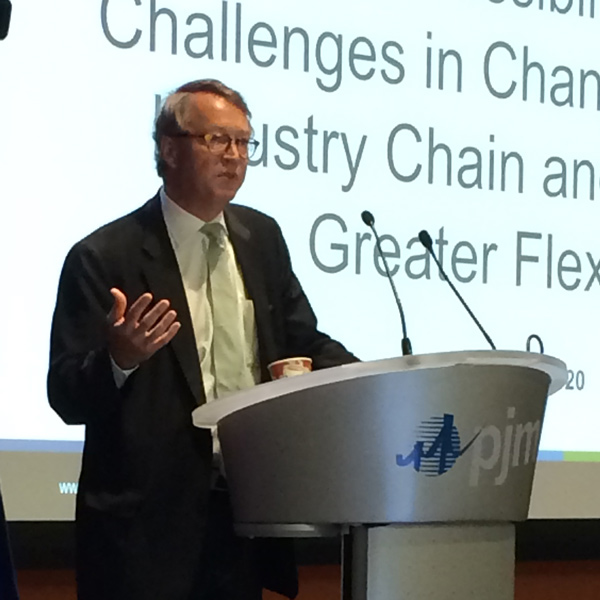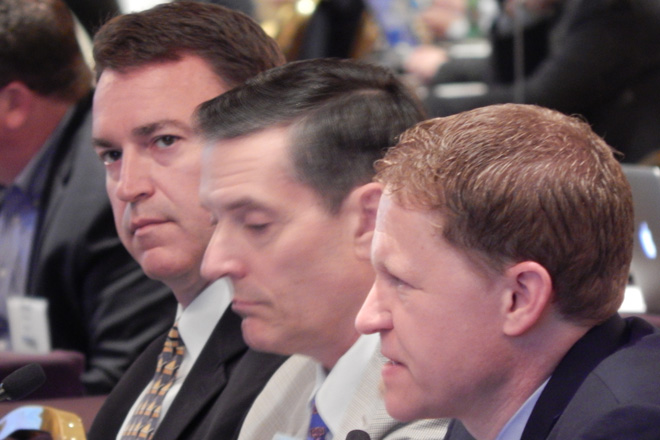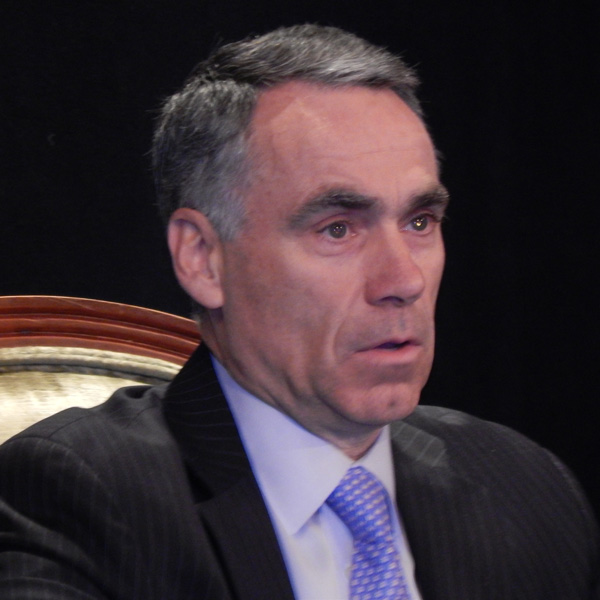By Chris O’Malley
MISO officials on Thursday unveiled an eye-opening starting point for a redesign of the stakeholder process, with a straw man proposal to reduce by more than one-third the number of committees from the RTO’s arguably Byzantine structure.
The presentation at the MISO Steering Committee, meeting in Milwaukee, was the formal kick-off to an initiative intended to improve a stakeholder process some consider to have become cumbersome. MISO recently issued a white paper that identified shortcomings.
Perhaps no better illustration of that was a flowchart presented at the meeting that shows 27 committees and subcommittees holding more than 550 meetings and generating more than 30,000 documents annually.
Eliminate 10 Committees?
The straw man proposal calls for a reduction in the number of committees to 17.
Michelle Bloodworth, MISO’s executive director of external and stakeholder affairs, said the goal is to improve efficiency, not simply to reduce the number of committees.
“Certainly there are fewer boxes on the chart versus our existing structure,” she said. “When we felt like an issue was discussed in two committees, or even three or four, we tried to take a stab at looking where it made sense to combine some of these issues. … Again, we are going to ask for your feedback.”
She didn’t have to wait long.
“[I’m] really curious to hear about the combination of the Reliability [Subcommittee] and the Market [Subcommittee],” said Bob McKee, chair of the Planning Advisory Committee and manager of regulatory relations and policy for American Transmission Co.
The straw man flowchart does not include the current Market Subcommittee. It does include a Confidential Reliability Subcommittee as part of a newly created Operations Committee.
“Because those are two charges, separate and distinct charges, that MISO has … more details on that would be needed,” McKee added.
McKee was involved in the last effort to revise the stakeholder process eight years ago.
“This isn’t just about an org chart. It’s about execution. So whatever proposal you guys come up with, execution can’t be left off the table,” he said.
Industry Challenges Bolster Need for Change
MISO launched the stakeholder process review after requests from stakeholders, Edison Electric Institute CEOs and the Organization of MISO States (OMS), which represents state regulators.
Bloodworth said she has heard complaints about the stakeholder process since she joined MISO earlier this year. “When I jumped in the door I don’t think I ever heard one comment from any of the stakeholders that this process was perfect, that it didn’t need to have changes, that there wasn’t frustration.”
She said improving the stakeholder process is imperative, especially in light of the challenges facing the industry, including environmental regulations, a changing generation mix and resource adequacy concerns.
In addition to complaints of overlapping responsibilities among committees and excessive meetings, stakeholders said they were concerned that meetings were overly focused on technical concerns rather than policy.
Just 5% of MISO’s 2014 agenda items addressed policy issues, according to MISO leaders involved in the redesign. That’s been frustrating to some stakeholders in policymaking capacities, including state regulators.
“They really want to have the forum and the opportunity to give their expertise and their insight, and probably not as good a use of their time [is] very detailed technical discussions when they can’t provide as much value to the discussion,” Bloodworth said.
She said MISO’s goal is to reduce the number of meetings and improve its prioritization on issues that are of most critical importance.
The redesign effort seemed a little nebulous to some, including Gary Mathis, senior director of electric policy at Madison Gas and Electric Co.
“I’m a little confused about the concern about not enough focus on the policy issues,” Mathis said, asking what high-level policy issues stakeholders felt did not receive enough attention.
Bloodworth replied that on the much-discussed topic of resource adequacy, some members said “they are frustrated that we’ve not come up with and addressed their problems that they’re having. … It’s really trying to prioritize.”
OMS Suggests a ‘Convocation’
Iowa Utilities Board Commissioner and OMS President Libby Jacobs compared MISO to an adolescent in its development. She said it seems like the right time to step back and reassess the stakeholder process put in place several years ago.
Two weeks ago, the OMS board voted to convene a forum on improving the MISO stakeholder process. (See Amid Tensions OMS Proposes MISO Stakeholder Forum.)
Jacobs emphasized that OMS was not attempting to hijack the MISO effort but to work “in tandem” with the RTO.
“We certainly are very appreciative of the sense of urgency that MISO has placed on the issue of stakeholder process this year,” she told the Board of Directors at their meeting earlier Thursday. “But we felt that maybe there was a step that was missing, and that was a formal convocation of the various stakeholder groups talking, maybe taking two or three representatives from each sector with a facilitated discussion — the facilitator would be a third party outside the stakeholder group — to help the stakeholders talk about priorities importance to them.”
“OMS does not have all the answers; we’re just happy to convene” the discussion, Jacobs added.
Feedback Sought
MISO is seeking stakeholder sector feedback. A workshop is likely in August with more formal discussion of stakeholder process proposals at the October meeting of the Advisory Committee.
